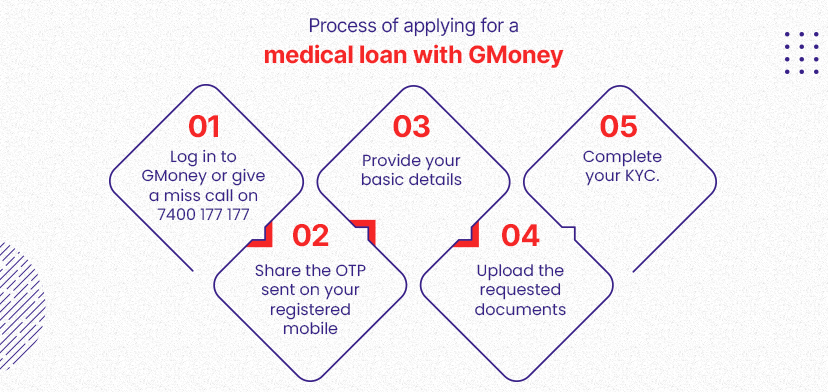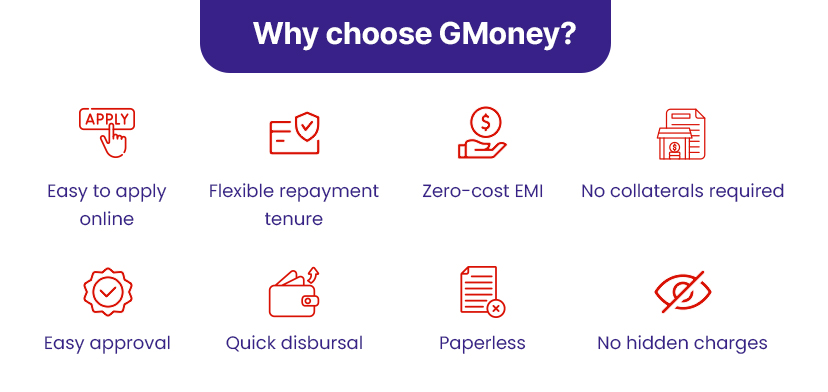Home » Diabetic Foot: Don’t Suffer in Silence, Seek Treatment in Gurugram

Diabetes is a common condition that affects millions of individuals worldwide. It is a chronic condition that affects the body’s ability to process glucose or sugar, which is essential for energy production. It can be addressed with the use of medication, diet, and physical activity. Left untreated can cause serious health problems such as heart disease, stroke, kidney failure, and nerve damage.
Diabetic foot treatment in Gurugram can be expensive, putting a financial hardship on people suffering from the condition. Fortunately, certain things can be performed to lower the expense of medical treatment. GMoney Instant Medical Loan, for example, provides an affordable loan for diabetic foot treatment. These loans can be used to pay for medical expenses such as doctor’s visits, medicines, and other diabetes-related costs.
The best diabetic foot surgeon in Gurugram will perform a physical examination to discover any indications or symptoms of diabetic foot.
The medical expert will check for evidence of neuropathy, poor circulation, ulcers, or other issues during the physical examination. In addition, the doctor will inquire about the patient’s medical history, lifestyle choices, and previous therapies.
A thorough foot inspection might aid in detecting any underlying disorders or complications that require additional treatment.
A. Medical treatments
Pain relief and infection prevention medications
Adequate Wound Management
B. Surgical techniques
Debridement of Dead Tissue
Amputation in Serious Cases
C. Changes in lifestyle
Effective Foot Care
Exercise and physical therapy
The severity of the problem and the individual’s overall health determine optimal diabetic foot care. The best results are obtained through a multidisciplinary approach comprising a healthcare practitioner, a podiatrist, and a physical therapist.
Diabetes foot treatment in Indore can be costly, ranging from Rs. 26,773 to Rs. 4,67,708. This cost might place a strain on families’ finances. There are therapeutic options available, such as medication and amputation, and the cost of these treatments can vary. Amputation may be required in some circumstances to treat diabetic feet, which can be costly.
Amputation may be required to prevent infection, relieve discomfort, or improve healing chances. Before making a decision, it is critical to consider the expense of therapy with your doctor. Other treatment alternatives, like physical therapy and customised shoes and inserts, are available and can help lessen the cost burden of diabetic foot care.
GMoney provides medical loans developed exclusively to assist people and families in managing the costs of diabetic foot treatment and other healthcare demands. GMoney loan for medical treatment is tailored to each individual’s specific financial circumstances and can assist in covering the costs of diabetic foot drugs, procedures, and other treatments. All with zero interest rates and no-cost medical EMI.
GMoney makes it simple to apply for a loan and can deliver a speedy decision, allowing treatment to begin as soon as possible. Individuals and families can utilise GMoney to obtain the financial assistance required to manage diabetic foot care.

1) Can diabetics prevent foot issues without the assistance of a healthcare provider?
While people with diabetes can take precautions to lower their chances of developing foot issues, it is critical to seek the advice and treatment of a healthcare specialist.
2) Is diabetic foot more common in those with type 1 diabetes than type 2 diabetes?
Diabetics of both types 1 and 2 diabetes are at risk of developing diabetic foot. Type 2 diabetes, on the other hand, is a significant cause of diabetic foot problems.
3) Is it more frequent among males or women to have diabetic feet?
Diabetic foot affects both men and women equally, albeit women are more likely to have severe consequences due to hormonal abnormalities and a higher risk of neuropathy.
4) What role does good footwear play in diabetic foot prevention?
Proper footwear is critical in preventing diabetic foot because it can give cushioning and support, reducing pressure on the feet and preventing accidents.
5) How can diabetics keep their feet in good condition?
Diabetics can maintain adequate foot care by washing and drying their feet daily, wearing proper footwear, checking their feet regularly, and getting early medical help if they encounter foot injuries or symptoms.
6) How can people with diabetes enhance their foot circulation?
Diabetes patients can enhance their foot circulation by engaging in regular physical activity, eating a balanced diet, and not smoking.
7) How can people with diabetes lower their risk of neuropathy?
Diabetics can lower their risk of neuropathy by maintaining good glycemic control, avoiding smoking, and engaging in regular physical activity.
8) Can I use the loan to pay for diabetes treatment?
Yes, you can utilise the loan to cover any medical expenses.
9) How will I make my loan payments?
Loan payments can be made via EMI, internet transfer, or check.
10) Are there any additional fees associated with GMoney’s medical loan?
No, there are no hidden fees with GMoney.

Diabetic foot is a potentially lethal condition that can occur in diabetics. Recognising symptoms and seeking medical attention as soon as they appear is crucial. Early detection and treatment of diabetic foot patients can help them avoid more serious problems and improve their results. Furthermore, GMoney medical loans can make diabetic foot treatments more reasonable, allowing patients to take charge of their health and finances.
Disclaimer: THIS WEBSITE DOES NOT PROVIDE MEDICAL ADVICE.
Follow us
Reach us
Mumbai HO
GMoney Pvt. Ltd.
315, 215 Atrium,
Next to Courtyard by Marriott,,
A.K. Road, Andheri East,
Mumbai - 400093
Ph : +91 86570 00105, +91 72089 60444
Quick Links
Bengaluru
GMoney Technologies Pvt. Ltd.
Oyo Work Spaces, Umiya Emporium,
Opposite Forum Mall, Hosur Rd,
Koramangala, Bengaluru,
Karnataka 560029
Ph : +91 89717 34815
Delhi
GMoney Technologies Pvt. Ltd.
Berry Co Works, 1E/3,
Jhandewalan extension,
Next to jhandewalan metro station
gate no. 2 Barakhambha Road,
New Delhi, Delhi 110001
Ph : +91 97116 26832
Pune
GMoney Technologies Pvt. Ltd.
91 Spring Board, Sky Loft,
Creaticity Mall, Off, Airport Rd,
opposite Golf Course, Shastrinagar,
Yerawada, Pune,
Maharashtra 411006
Ph : +91 84250 28758
Chandigarh
GMoney Technologies Pvt. Ltd.
SCO no. 292,
First Floor, Sector 35D,
Chandigarh
Ph : +91 84279 82012
Jaipur
GMoney Pvt. Ltd.
CODESKK Civil Tower,121 122,
Pandit TN Mishra Marg,
Santhosh Nagar, Nirman Nagar,
Jaipur – 302019
Ahmedabad
GMoney Pvt. Ltd.
22nd Floor, B Block,
Westgate By True Value,
Nr. YMCA Club, SG Highway,
Ahmedabad – 380051
Hyderabad
GMoney Pvt. Ltd.
Dwaraka Pride,
Plot no. 4/1, Survey No. 64,
Huda Techno Enclave, Madhapur,
Hyderabad (Telangana) – 500081
Chennai
GMoney Pvt. Ltd.
DBS Business Center, 31A,
Cathedral Garden Rd, Badrikari, Tirumurthy Nagar, Nungambakkam, Chennai, Tamil
Nadu – 600 034
Mumbai HO
GMoney Pvt. Ltd.
315, 215 Atrium,
Next to Courtyard by Marriott,,
A.K. Road, Andheri East,
Mumbai - 400093
Ph : +91 86570 00105, +91 72089 60444
Bengaluru
GMoney Pvt. Ltd.
3rd floor, Ranka Junction,
AH45, Krishna Reddy Industrial Estate,
Dooravani Nagar,
Bengaluru Karnataka - 560016
Ph : +91 72089 60444
Pune
GMoney Pvt. Ltd.
91 Spring Board, Sky Loft,
Creaticity Mall, Airport Rd,
Opp. Golf Course, Shastrinagar,
Yerawada, Pune,
Maharashtra - 411006
Ph : +91 72089 60444
Delhi
GMoney Pvt. Ltd.
Berry Co Works, 1E/3,
Jhandewalan extension,
Gate no. 2 Barakhambha Road,
New Delhi, Delhi - 110001
Ph :
+91 72089 60444
Chandigarh
GMoney Pvt. Ltd.
SCO No. 292,
First Floor, Sector 35D,
Chandigarh - 160022
Ph : +91 72089 60444
Hyderabad
GMoney Pvt. Ltd.
Dwaraka Pride,
Plot no. 4/1, Survey No. 64,
Huda Techno Enclave, Madhapur,
Hyderabad (Telangana) - 500081
Jaipur
GMoney Pvt. Ltd.
CODESKK Civil Tower,121 122,
Pandit TN Mishra Marg,
Santhosh Nagar, Nirman Nagar,
Jaipur - 302019
Chennai
GMoney Pvt. Ltd.
DBS Business Center, 31A,
Cathedral Garden Rd, Badrikari,
Tirumurthy Nagar,Nungambakkam, Chennai,
Tamil
Nadu - 600 034
Pune | Mumbai | New Delhi | Kolkata | Chennai | Navi Mumbai| Bengaluru | Ahmedabad | Nagpur | Hyderabad | Jaipur | Lucknow | Bhopal | Bhubaneswar | Nashik | Indore | Ghaziabad | Kanpur | Amritsar | Vasai | Noida | Gurugram | Chandigarh | Ranchi | Cuttack | Thane | Kalyan | Jalandhar | Kolhapur | Visakhapatnam | Chakan| Greater Noida | Wagholi | Raipur | Panvel | Belgaum | Mohali | Bhiwandi | Talegaon | Coimbatore | Palghar | Mumbra | Sangli | Surat | Durgapur | Ludhiana | Kochi | Agra | Ahmednagar | Ajmer | Akola | Aurangabad | Baroda | Beed | Rewari | Patiala | Vellore | Ranjangaon | Nanded | Nellore | Panipat | Panjim | Madurai | Mysore | Mangalore | Korba | Mathura | Kalaburagi | Jalgaon | Kharar | Guwahati | Kollam | Jamshedpur | Gwalior | Saswad | Solapur | Varanasi | Salem | Sambalpur | Jodhpur | Hubli | Panchkula | Faridabad | Amravati | Ayodhya | Badlapur | Dehradun | Parbhani | Ujjain | Udaipur | Tiruchirappalli | Srinagar | Shimla | Secunderabad | Ratnagiri | Pandharpur | Ananthapuram | Buldhana | Hadapsar | Baramati | Chittoor | Darjeeling | Dhule | Fatehpur | Gandhinagar | Haridwar | Gorakhpur | Jhansi | Kanchipuram | Kartarpur | Kurukshetra | Pondicherry | Prayagraj | Bharuch | Bhusawal | Bathinda | Pathankot | Nandurbar | Niphad | Kolar | Ambala | Kota | Pendurthi | Jabalpur | Palwal | Bhilai | Bhiwani | Bilaspur | Patna | Rohtak | Phagwara | Malegaon | Vijayawada | Bikaner | Chiplun | Darbhanga | Roorkee | Bhor | Rajahmundry | Margao | Alwar | Dhanbad | Bulandshahr | Aluva | Mulshi | Davanagere | Kapurthala | Anantapur | Loni | Latur | Gondia | Chhindwara | Chandrapur | Dharmapuri-TN | Faridkot | Dharwad | Daund | Chaksu | Bareilly | Kakinada | Haldwani | Doddaballapur | Dindori-MH | Bagru | Kudus | Kozhikode | Gurdaspur | Bokaro | Berhampur | Batala | Barrackpore | Ramgarh | Meerut | Bassi | Dera Bassi | Howrah | Karjat Raigarh | Thiruvananthapuram | Bheemunipatnam | Ambegoan | Allahabad | Aligarh | Alappuzha | Tirupathi | Thoppumpady | Srikakulam | Siliguri | Rourkela | Mirzapur | Gadag | Bellary | Tumkur | Sonipat | Hoshangabad | Junnar | Jalna | Hisar | Karnal | Kottayam | Muzzafarnagar | Ramnagara | Thrissur | Bahadurgarh | Balasore | Baraut | Dhar | Ernakulam | Gadhinglaj | Chikodi | Vaniyambadi | Kamothe |